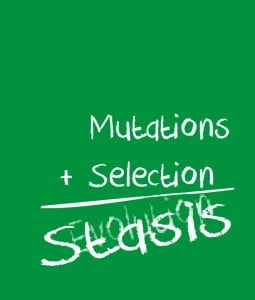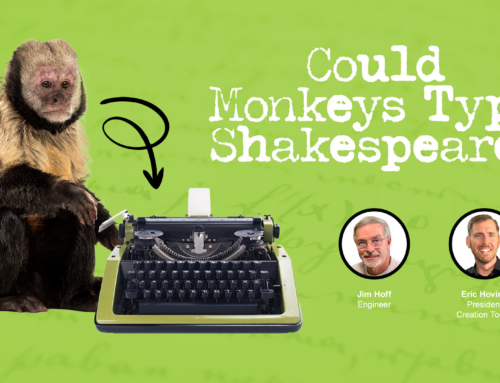 The genetic mutation plus natural selection equation emerged as the most popular theory of biological evolution during the twentieth century. With advances in biotechnology, however, the credibility of this theory – popularly known as neo-Darwinism or the Modern Synthesis theory – has since been increasingly challenged by evolutionary scientists.
The genetic mutation plus natural selection equation emerged as the most popular theory of biological evolution during the twentieth century. With advances in biotechnology, however, the credibility of this theory – popularly known as neo-Darwinism or the Modern Synthesis theory – has since been increasingly challenged by evolutionary scientists.
In an experimental evolution model using the yeast microbe Saccharomyces cerevisiae, a recent study published in the journal Science by a Harvard research group undermines the theory of genetic mutations plus natural selection equals evolution. The model demonstrates stasis – not evolution.
With a $320,000 National Institute of Health grant, working from his fourth-floor lab at Harvard University, assistant professor Michael Desai in Organismic & Evolutionary Biology, discovered that the introduction of a wide variety of genetic mutations over time produces the same result.
The study, unprecedented in scale using 64 closely related genotypes focusing on 104 over the course of 500 generations, sought to gain insight into the long unanswered evolution question – If we could start the world over again would life evolve the same way?
Stephen J Gould, a twentieth century evolutionary legend, declared at the Academy of Achievement in 1991 when asked to comment on “rewinding the evolutionary tape of life” –
“We want to know why we’re here. To a large extent it is a grand-scale accident that we’re here. Evolution has oddly contingent pathways, and we never run the same way twice. If you could go back 500 million years and run the tape of life again, you wouldn’t get human beings, and you probably wouldn’t get anything conscious.”
Desai’s yeast cells, however, call Gould’s dictum into question. After more than 500 generations of mutations and selection, “all of Desai’s yeast varieties arrived at roughly the same evolution endpoint regardless of which precise genetic path each strain took,” according to science writer Emily Singer.
In the article entitled “Evolutions random paths lead to one place” published in the September 11 edition of Quanta Magazine, Singer reports that “different strains of yeast grown under identical conditions develop different mutations but ultimately arrive at similar endpoints.”
“It’s as if 100 New York City taxis agreed to take separate highways in a race to the Pacific Ocean, and 50 hours later they all converged at the Santa Monica pier,” Singer said – upending Gould’s dictum.
Experimental Design
Not only is the result stunning, so was the scale of Desai’s (pictured) experimental design. As a trained physicist, Desai applied a statistical perspective using robots to precisely manipulate hundreds of lines of yeast to perform large scale evolutionary experiments. Scientists have long studied genetic evolution of microbes, but until now, only a few strains at a time.
Robotically managing 640 lines of yeast from a single parent cell, Desai’s team was efficiently tooled to statistically analyze evolution at this level for the first time.
In an interview with Singer, Joshua Plotkin, an evolutionary scientist at the University of Pennsylvania, commented, “This is the physicist’s approach to evolution, stripping down everything to the simplest possible conditions… They could partition how much of evolution is attributable to chance, how much to the starting point, and how much to measurement noise.”
In the Desani Lab, the team tracked yeast strains as they grew under identical conditions and then compare their final fitness levels, which were determined by how quickly they grew in comparison to their original ancestral strain. The colonies that had grown the most in that period advanced to the next round, and the process repeated for 500 generations.
Using specially designed robot arms, the fastest growing yeast colonies were transferred to a new home every 12 hours. Sergey Kryazhimskiy, a postdoctoral researcher, sometimes spent the night in the lab analyzing the fitness of each of the 640 strains at three different points in time.
The researchers compared fitness between the strains and sequenced the genomes of 104 of the strains to determine whether the early genetic mutations changed the ultimate and final performance.
While early mutations in the experiment initially variably influenced fitness, fitness in the final generations was the same. “Scientists,” Singer noted, “don’t know why all genetic roads in yeast seem to arrive at the same endpoint” – Saccharomyces cerevisiae (pictured below) . After all the mutations and selection, Saccharomyces cerevisiae ended as Saccharomyces cerevisiae.
Scientists Validate Importance
Vaughn Cooper, associate professor in the Department of Molecular, Cellular, & Biomedical Sciences at the University of New Hampshire, reflecting on Desai’s study told Singer, “Perhaps there is another layer of metabolism that no one has a handle on.”
“I think many people think about one gene for one trait, a deterministic way of evolution solving problems,” David Reznick, a biologist at the University of California-Riverside, told Singer. “This says that’s not true.”
Unexpectantly, Desai’s team discovered genetic mutations plus selection yields stasis in the microbe model– not evolution.
The evolution model, rather than demonstrating compatibility with evolution, demonstrates greater compatibility with Moses’ account of creation in Genesis.
Evolution was once a theory in crisis, now evolution is in crisis without even a cohesive theory.
Biological evolution exists only as a philosophical fact, not as a scientific fact.







